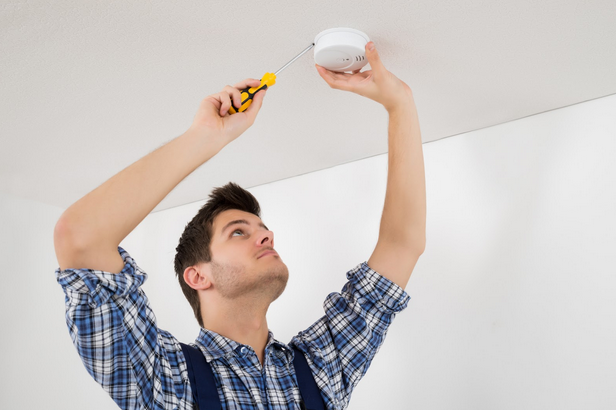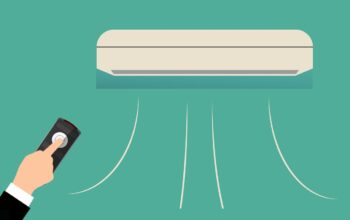If a home’s safety measures were to be considered as an orchestra, the fire alarm system would undoubtedly be the conductor. Essentially, it’s the unsung hero in our homes, constantly watching over its occupants night and day. The evolving landscape of smoke alarm technology continues to offer a plethora of choices. Thus, this detailed guide is tailored to help you demystify smoke alarm intricacies, thoroughly exploring their types, operation, selection, installation, upkeep, and renters’ rights and responsibilities.
Understanding the Basics of Smoke Alarms
At the core, smoke alarms serve as your residential watchdogs for fire incidents. They ensure your safety by alerting everyone in case of a detection, giving a loud sound or an ear-splitting beep. In Australian homes, you’ll typically find two major types: photoelectric and ionisation alarms.
Photoelectric alarms play a vital role in detecting slow-burning, smouldering fires. They excel in identifying possible threats from objects like electrical wiring, upholstered furniture, or rugs that can smoulder before bursting into flames. On the other hand, ionisation alarms respond swiftly to fast-flame fires, such as those incited by paper, or excessive kitchen grease. Deploying both types of alarms in your abode will provide a comprehensive shield, significantly reducing the likelihood of any fire breakout going unnoticed.
Choosing the Right Smoke Alarm for Your Home
The task of selecting the perfect fire alarm for your dwelling demands careful consideration of numerous factors. Home size, architectural design, lifestyle, and unique hazard points are all decisive elements. For example, homes with extensive electronic equipment might prioritise photoelectric alarms for their superior performance in detecting electrical fires. Simultaneously, houses heated mainly by wood-burning appliances might see the higher value in ionisation alarms which are engineered to detect fast-flaming fires.
With the advent of smart smoke alarms, homeowners and renters now have the opportunity to integrate them with existing home security systems. Such alarms boast smartphone connectivity, presenting the convenience of immediate alerts when alarms are triggered, even when you are away. For larger residences, or those spanning multiple levels, the quantity and strategic placement of these alarms can play a decisive role in ensuring the safety of every corner of your property.
Installation & Placement of Smoke Alarms
Installation of smoke alarms is not a process to be taken lightly. It needs meticulous planning and precise execution. Adhering to local building codes and guidelines would ensure the optimal functioning of these detectors. As a general rule, smoke alarms should be installed on the ceiling, placed away from walls, corners, or potential obstructions like ceiling fans and air-conditioning vents. To ensure safety with a professional electrician for smoke detector upkeep, homeowners and renters can consider engaging their services. This makes certain that the system seamlessly functions, delivering peace of mind while reducing potential fire risks.
Maintenance & Regular Checks for Smoke Alarms
Just as a car needs regular oil changes and tyre rotations to run at its best, smoke alarms too require proper maintenance. Even though these detectors have a typical lifespan of ten years, their smooth operation necessitates frequent attention. Most types of smoke alarms are battery-operated and should have their batteries replaced annually, with the exception of sealed lithium battery alarms that are engineered to last a decade.
Testing your alarm frequently is highly recommended. This procedure assures that system defects, if any, are spotted and addressed promptly with the necessary repairs or replacements. Routine tests also allow you to familiarise yourself with the sound your alarm makes, an invaluable asset when trying to respond quickly during an emergency.
Smoke Alarms for Renters: Rights & Responsibilities
For those renting, it is crucial to be privy to your rights and responsibilities concerning smoke alarms. The landlord is primarily responsible for ensuring working smoke alarms are installed in rented properties, aligning with regulatory compliances. However, if problems crop up—like intermittent beeping or faulty sensors—it becomes the tenant’s responsibility to notify the landlord as soon as possible.
Conclusion
In a nutshell, mastering smoke alarm knowledge isn’t just important, it’s lifesaving. Whether you own or rent, understanding different types, choosing the right ones, ensuring proper installation, and performing regular maintenance are all crucial steps in building a safer haven for yourself and loved ones. By taking action today, you can significantly reduce the risk of fire-related tragedies.
Here’s how you can get started:
- Homeowners:
- Invest in a professional smoke alarm installation and maintenance service. Many electricians offer this service, and ensuring expert care ensures your alarms function optimally.
- Visit your local fire department website for specific regulations and resources in your area.
- Renters:
- If you notice any issues with your smoke alarms, contact your landlord immediately. Don’t delay!
- Invest in a portable smoke alarm for additional peace of mind, especially if you live in a multi-story building.
Remember, a well-maintained smoke alarm is your home’s first line of defence against fire. Don’t wait for an emergency to act. Take control of your safety today!
Related Posts

Loves home. I am here to provide how to make your home a much better place. 🙂 Blogging about HomeDecor, Home Improvements and more.











